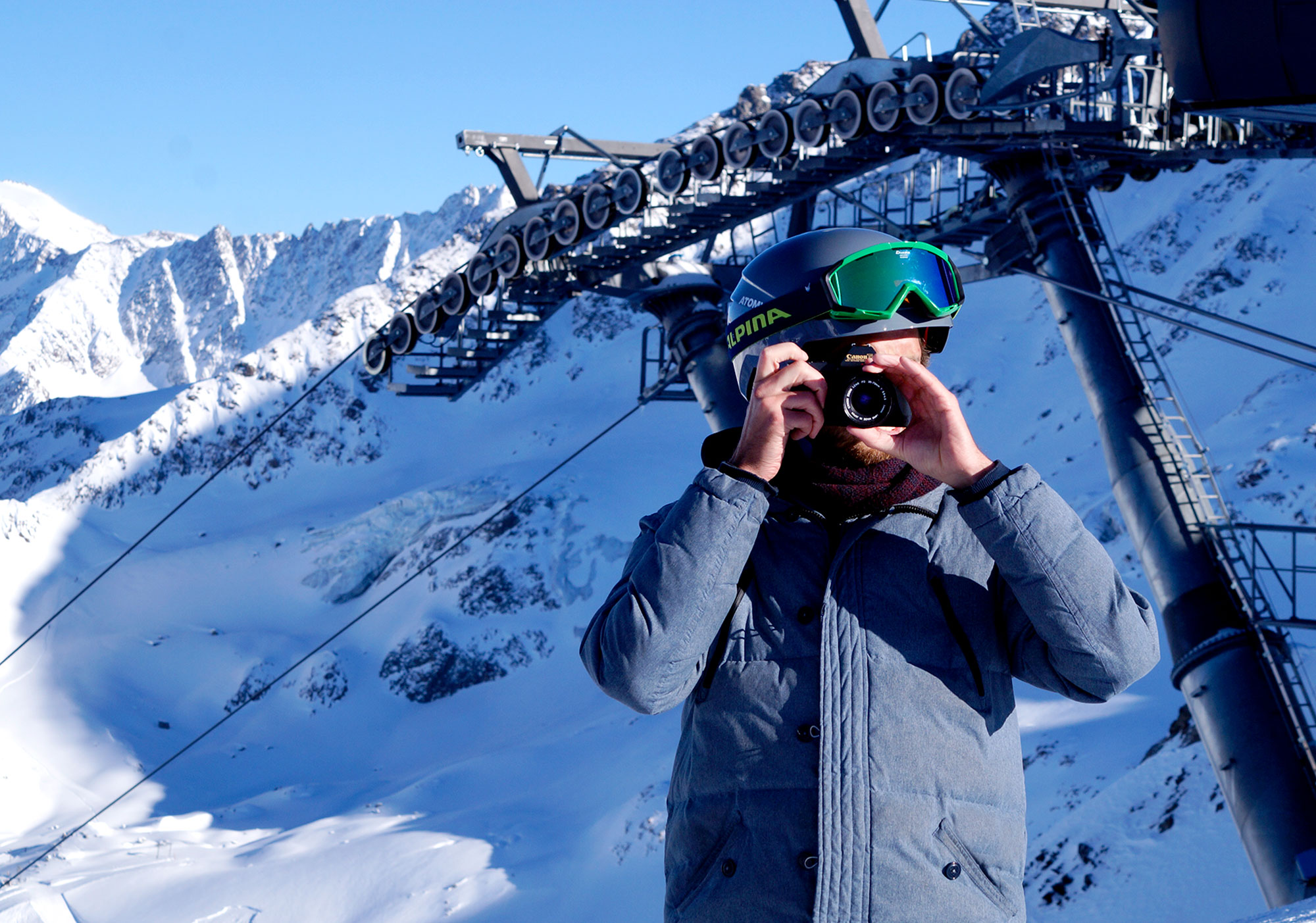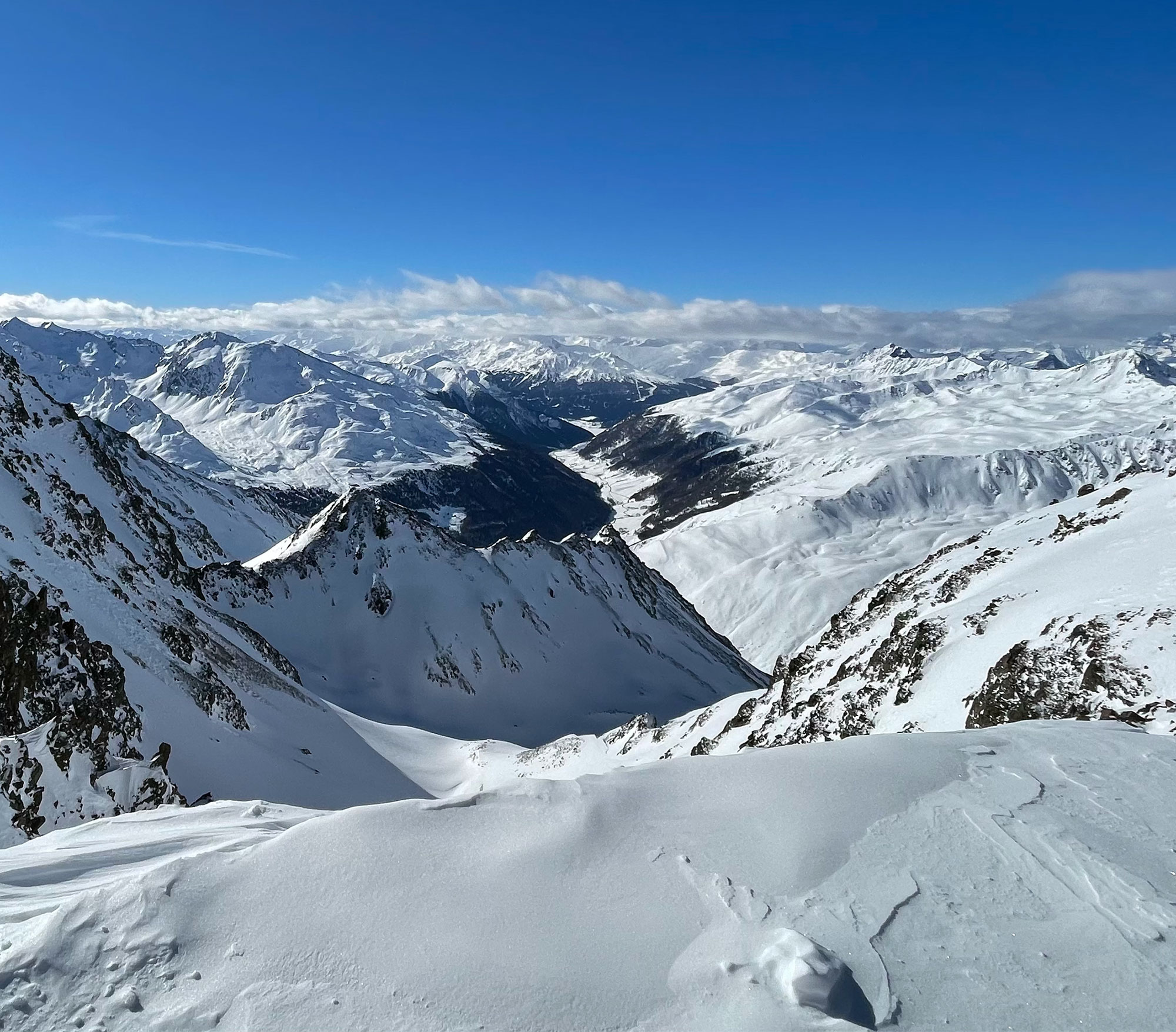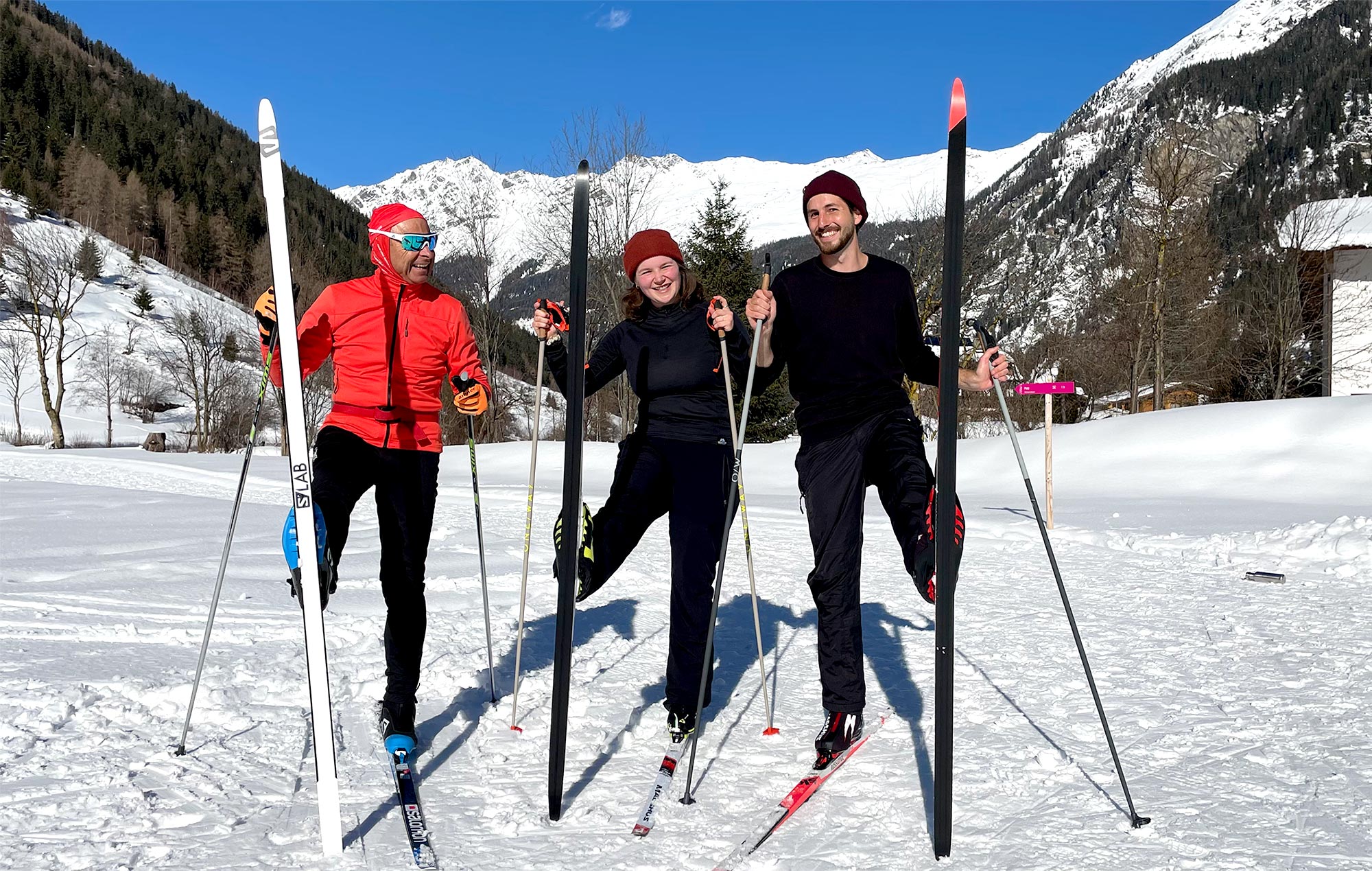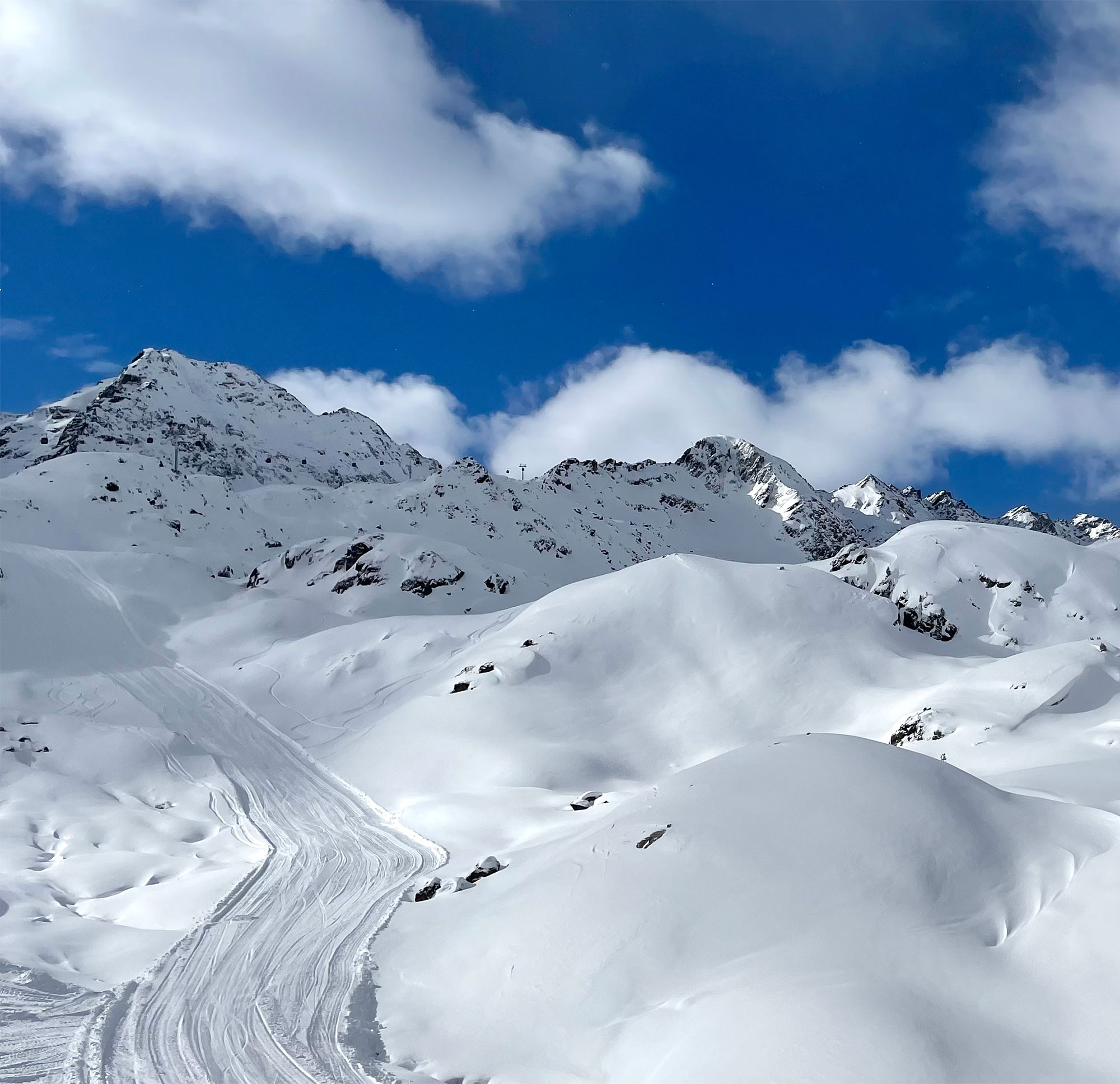
Weekend trip to the glacier - Kai in the Kaunertal
For a long weekend in the mountains, especially with this wet, drizzle, that sounds like a wonderful idea. But just from Berlin well, that's always a pretty decent route. Is it even worth it?
Is a long weekend from Berlin to the mountains worth it?
To find out, I – Kai – went to Kaunertal with my roommate Franzi from Thursday to Sunday Austria hazards. For this we took the ICE to Munich on Thursday morning. With a good connection, you can do it in just four hours. Since the WiFi is now working pretty well, I was able to use the time to work a little - at least a good impact on the working world in the current situation.

After a transfer time of just ten minutes, we went straight on to the ÖBB. After just six hours you are in Innsbruck, which already welcomes you with its beautiful mountain panorama. By the way: If you want to take a break after the first train journey, Innsbruck is highly recommended as a stopover. The mountain peaks, thickly covered with snow, made our anticipation grow.
Stopover in Innsbruck or directly on to Landeck-Zams in the Kaunertal
From here it was another 40 minutes mit dem zug continue to Landeck-Zams. The train station is about half an hour away from Kaunertal. From there we continued with a collective shuttle to the Kaunertal. To be more precise, we went to the village of Feichten to our hotel right on the banks of the Faggenbach, which meanders through the valley.
We were already expected at the hotel and we even had time to relax in the sauna before dinner. So we were able to end the day relaxed. Because the next day it was time to get up early: the first activity was on the agenda! But first a few words about the Kaunertal itself.
The special features of the Kaunertal and Gepatsch Glacier
The Kaunertal is characterized by its special location. Due to the fact that it lies between the mountain ranges of the Glockenturmkamm and the Kaunergrat, the conditions for numerous winter sports are extremely good here. While the valley is at about 1.300 meters, the highest peaks rise to over 3.000 meters. Unfortunately, the effects of man-made climate change can also be felt here. The Gepatsch Glacier, which lies at the end of the valley, has receded significantly over the past 150 years. At the same time, the ecosystems have changed, which is reflected, for example, in an earlier start of vegetation. In order to react to this, the surrounding communities, the tourism association and the Kaunergrat Nature Park have formed the model region KLAR! Kaunergrat, which means something like climate change adaptation model region.
How local initiatives are committed to climate protection
They want to work together on solutions in order to deal with the challenges and changes. One example is the Kaunergrat mountain range, which was designated as a conservation area last summer. More than 40 percent of the nature park region are now designated protected areas. The goals for sustainable and resource-saving development are based on the specifications of the UN Sustainable Development Goals.
The program also supports CLAR (Clean Alpine Region) Tyrolean tourism regions to further develop as a climate-friendly region. An e-shuttle has already been implemented in the Kaunertal and the "Raus aus Öl" (Raus aus Öl) initiative has been launched to support companies in switching to renewable energies. Other projects deal with storing rainwater for irrigation, organizing events in a way that conserves resources or building drinking water wells.
For all these ambitions, the region was awarded "Best Tourism Village" by the UNWTO in 2021. Even if there is still a lot to do, you can see the efforts of each individual to deal with the challenges. The positive efforts are evident from the regional cuisine in the Hotel Edelweiß to renewable energy for the ski lifts.

Our activities:
It started on Friday morning after breakfast at 9:30 a.m. Our way led us along the Faggenbach along the village street. Right next to the old town center is the tourist information and nature park exhibition, which also houses a leisure facility with a swimming pool and wellness area. A few steps further we met Heiner, our cross-country ski instructor, for our first activity.
In the rental we got the necessary equipment borrowed. Directly on the other side of the street there are wide meadows along the stream, which are now prepared with cross-country ski runs and hiking trails in winter. Some residents are even lucky enough to be able to ski directly onto the cross-country ski run from their terrace, which is why many locals do their laps here. Our ski instructor is also lucky, which certainly fuels his enthusiasm for this sport.
From a crash course in skate skis to a glacier exhibition
Since neither of us has ever been cross-country skiing, Heiner first explained the basics of the skating technique to us. After a few practice moves with different techniques, we ventured onto the cross-country ski trail for the first few meters. What was initially quite shaky, quickly got better. So after just two hours we did our first lap along the Faggenbach.

After lunch, Severin from the tourism association took us to the nature park exhibition "Climate, glaciers, Kaunertal“. Here the history of the valley, especially in relation to the advancing climate change and its effects on the Kaunertal Glacier, as well as current research work are dealt with. The construction of the dam in the 60s at the end of the valley is also on display and the positive aspects, such as flood protection and electricity generation for thousands of people, as well as the negative effects that the construction had on nature, are critically discussed.
Let's go to the ski slopes - without a car
On Saturday morning, the ski bus took us directly from the hotel door up into the mountains. A total of six buses drive between 8:30 a.m. and 11 a.m. to the valley station of the Ochsenalmbahn. So if you want to sleep a little longer, you can still get to the slopes comfortably and without a car. Here, too, we got a short ski course to get used to skiing again after a few years of break. If you are just starting out, you can of course start from scratch, but professionals will also get their money's worth with guided ski tours.
The area is extensive and, in addition to the slopes, offers a dreamlike, untouched landscape. Even part of the glacier, which covers the sharp rocks like a thick, white-blue blanket, can be seen. The three mountain stations at up to 3.113 meters are also right on the border Italy, which today is only marked by a symbolic stone. From here a breathtaking view extends in both directions and countries. The day passed far too quickly and we took the bus back to the valley.



Spontaneously to the night toboggan run
Since we felt the urge to move again after dinner, we grabbed two sleds, which the hotel lent free of charge, and made our way to the night toboggan run. Directly behind the house, so it went up the mountain. The path, illuminated with fairy lights, led up the mountain in serpentines for 30 minutes. The descent took six minutes. After that we settled into our feathers.
On Sunday it was time to say goodbye. In order to enjoy the day a little more, we had deliberately booked the later train back. So we had until 14 p.m. We grabbed the two sleds again and went to the other side of the valley. Here a path led up the mountain to the Adlerblick viewing platform.
Kai Meier
Kai supports Good Travel as a freelance writer. It can't go high enough for him, whether on a via ferrata or paragliding! He loves adventure, but also the simplicity of travel. He likes to spend the night like a prince in hotels, although glamping in the wilderness should not be neglected.






COMMENT